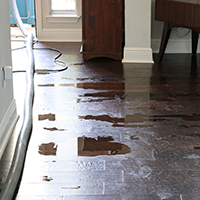Stopping Water Damage in the Bathroom
Go ServicesThey are making several great pointers relating to How to Prevent Bathroom Water Damage overall in this post directly below.
The washroom is very susceptible for wet build-up and potential water damages due to the constant use water in it. This short article supplies basic evaluation strategies to assist detecting water damages risks.
The constant use of water in the bathroom makes it exceptionally susceptible for wet build-up and prospective water damage. By evaluating it frequently, you can lower water associated damages.
The complying with set of inspections is very easy to perform and also should be done as soon as in every three months in order to maintain your bathroom healthy and to avoid potential water damages brought on by the tub, the shower, pipeline joints and plumbing, sinks, closets, and the bathroom
Do not neglect carrying out these examinations as well as be detailed while doing them. Remember that these simple assessments can conserve you a lot of cash by providing early signs for water damage
Sinks as well as Cabinets
Sinks and also cabinets are subjected to dampness and humidity everyday and also are frequently ignored. Inspect frequently under the sink as well as on the kitchen counter above it. Repair any type of drip in the catch as it may suggest drainpipe troubles. Look around the sink, sluggish draining pipelines might show a blocked drain. Change sink seals if they are fractured or loose.
Bathtub as well as Shower
The shower as well as bath tub require special interest as well as upkeep. Examine the tiles and replace if split. See to it that there is no missing out on grout between the ceramic tiles. Check as well as change fractured caulking at joints where the walls meet the floor or the bathtub. Blocked drains pipes and also pipelines troubles will certainly prevent the bathtub from drying as well as may suggest severe issues underneath the bath tub. Seek advice from a specialist quickly to prevent structural damage. Pay attention to discolorations or soft areas around the bathtub walls as they might suggest an interior leakage.
Plumbing
Signs for water damages are difficult to discover considering that a lot of pipelines are set up inside the walls.
Pay special interest to flooring and walls moisture and discolorations as they might show an unseen plumbing trouble. Examine wetness levels in adjoining rooms as well.
The Toilet
The commode is an at risk water joint. Inspect the water lines as well as search for leaks around the toilet seat, in the tube, and also under the water storage tank. If you discover any type of signs of moisture on the flooring around the commode, check for leaks in the toilet rim and also container seals.
Know that hanging toilet bowl antiperspirants boosts the possibilities for clogs.
Water Damage Signs In The Bathroom To Avoid Cleanup
Musty smell
This is one of the easiest signs to catch because musty smells are so odorous. The damp, earthy, moldy smell should be a big red flag. The smell will develop when moisture gets trapped in surfaces, and begins to facilitate mold growth. Leaking pipes under cabinets, inside walls, and behind shower fixtures will cause moisture to stay trapped and not dry, which will lead to mold growth and spread. As soon as you notice any musty smells in your bathroom, have it checked for hidden water damage and cleanup signs.
Visible mold
If the smell isn’t there to give it away, sometimes you will actually see mold growth. Finding mold in your bathroom is a serious problem, because mold is very harmful to your health. By the time mold growth is visible, it also means that water damage has already occurred and been present for some time. The only way the mold problem can be resolved is to find the source of the moisture and get it stopped. To safely and adequately remove mold, you need to have professionals handle the remediation. Do not waste any time in getting mold problems addressed, fixed, and sanitized so that you can protect you and your family from the many respiratory symptoms caused by mold exposure.
Damaged floors
Bathroom floors should be able to withstand some exposure to water while still remaining in good condition. However, when excess exposure or water leaks occur, they will begin to damage even the most water-resistant flooring. If you notice any cracking, bubbling, staining, or warping on your bathroom floors, there is probably a water leak somewhere causing the distortion. If you notice areas of the floor have become softer, or even have a spongy feeling, there is probably damage to the subfloor. Subflooring is typically made up of plywood. When plywood is exposed to water or moisture, it will absorb it. Once it has become saturated, the weight of the excess water will cause the wood to swell and soften. Check the floors in your bathroom frequently to catch any of these sings before they lead to damaged subflooring.
Changes on walls
When water leaks behind walls, it will cause changes in the drywall. Peeling plaster, blistering paint, and soggy wallpaper are all good indicators that excess water is building up behind the wall. Water leaking behind drywall will cause it to swell and be soft to the tough. If you start to notice gaps along the trim of your walls, or where tile meets the wall, it could also be a strong indicator that there is a leak behind the wall. Any changes, distortion, or damage on the walls should be evaluated as soon as you notice it to prevent further water damage and cleanup.

I have been very excited about How to Prevent Bathroom Water Damage and I really hope you enjoyed reading my blog post. Loved our blog entry? Please share it. Help somebody else discover it. Thanks a lot for your time. Please visit our website back soon.
Book An Estimate Now